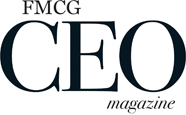It’s as true for employers in FMCG and manufacturing as it is in any other industry, the ability to recruit and retain top talent while driving performance is of paramount importance. Yet, our recent research reveals a concerning reality: just 28% of employees in manufacturing have regular one-on-one meetings with their managers, only 10% engage in regular career growth conversations and a mere 11% have a clear career growth path. Moreover, just 23% have clear performance expectations and metrics and only 26% have an avenue for open and honest feedback. This research, we commissioned in partnership with YouGov, sheds light on the gaping chasm between employee expectations and what employers in manufacturing currently provide and leaves me to wonder: are we inadvertently setting our employees up to fail?
Against a backdrop of macroeconomic challenges and an increased focus on performance, it is imperative that employees understand what is expected of them. The research unequivocally demonstrates the positive correlation between core HR programmes like regular one-on-ones, clear career growth paths, development conversations and precise performance metrics with employees’ comprehension of their performance expectations.
So, why are so few manufacturers leveraging these essential HR programmes – especially when these tools have been considered best practice for quite some time?
The disconnect: what employees need
To bridge the performance development gap effectively, we must first recognise what employees genuinely require to perform at their best. Our YouGov survey provided some valuable insights into these needs, highlighting the following priorities in order of importance:
Feeling trusted by managers/supervisors. Employees thrive when they feel trusted and empowered by their superiors. Trust fosters a sense of ownership and commitment, driving individuals to go the extra mile and fostering discretionary effort.
Flexible working policies. In an era where work-life balance is paramount, flexible working policies are highly prized. Whilst it’s appreciated that this isn’t always feasible in the manufacturing sector (in fact, the research shows that currently only 34% in manufacturing have flexible working policies compared to 48% across all industries), they enable employees to tailor their work to their individual circumstances, leading to increased satisfaction and productivity. However, it’s important to remember that the complexities that a remote/hybrid work environment can require attention and effort to address.

Clearly defined responsibilities. Employees need a precise understanding of their roles and responsibilities. Ambiguity breeds confusion, while clarity empowers individuals to focus on tasks that matter most.
Regular praise and recognition. Positive reinforcement is a potent motivator. Regular praise and recognition for a job well done will boost morale, engagement and job satisfaction. This is also a crucial component to reinforcing a high performance culture.
A positive and inclusive company culture. A positive and inclusive workplace culture is the foundation of employee wellbeing. It fosters collaboration, innovation and a sense of belonging. It’s highly important that while business leaders are keenly focused on performance and productivity, we don’t forget about the critical role of wellbeing and culture.
Meeting employee needs for peak performance
So, what are some of the concrete steps and programmes that we can put in place to help set our employees up for success?
Clarify performance expectations. Establish clear and transparent performance expectations and metrics for each role within the organisation. Ensure that employees understand how their work directly contributes to the company’s, their department’s and their individual development goals.
Implement regular one-to-one meetings. Foster open communication through regular one-to-one meetings between managers and their direct reports. These sessions provide a platform for discussing goals, expectations and feedback and can mitigate the effects of recent bias which often occur when relying on annual or bi-annual performance reviews as the core check-in for these conversations.
Develop clear career growth paths. Establishing good career tracks and matrixes requires significant time, effort and expertise – but the benefits and end results are more than worth the investment. Especially during an economic downturn, when cost-cutting and efficiency gains often slow the pace of recruitment, filling skills gaps through employee development instead of new hires becomes crucial.
Facilitate regular development conversations. Encourage managers and employees to engage in regular career growth conversations – career conversations should be an “always-on” activity, not something you do once every six months or when it’s time for annual performance reviews.
Measuring impact
It may seem obvious, but it’s still worth mentioning, that the first step to assessing the impact of any people programme is to establish how you’re going to measure success and ensure you have a baseline measurement for how you’re currently doing. You want (and need) to be able to prove the ROI of your work but, without a starting point to measure progress against, you’ll struggle to demonstrate your impact.
Once you have your baseline, you can move onto the next steps:
Collect feedback. Regularly collect feedback from employees to assess the impact of implemented changes on their understanding of performance expectations and overall job satisfaction. Utilise templated pulse surveys so that you can compare results on a monthly or quarterly basis and easily report back to stakeholders on progress.

Track performance metrics. Monitor key performance indicators (KPIs) to evaluate whether improvements in employee understanding and engagement are translating into enhanced performance and results. In fact, we recently created a HR Metrics Cheat Sheet that details the key metrics HR teams should report on, how to calculate them and the current industry averages so you can benchmark your own performance and identify areas for improvement.
Leverage data-driven analytics. One of the most powerful benefits of HR software and tech tools is their ability to provide data-backed evidence for decision making and reporting on results for your people programmes. Technology can be incredibly valuable not only in proving the impact of your work, but also in crafting the business case for strategic initiatives and securing executive buy-in.
In today’s competitive talent market, it’s time for manufacturers to recognise that supporting employee success is not just an expense – it’s a strategic investment in the future prosperity of the organisation. As our YouGov survey reveals, there is a significant gap between employee expectations and what employers currently provide. However, by investing in clear communication, career development and performance management, manufacturers can create a culture of trust, empowerment and high performance.

Stan Massueras is Lattice’s International General Manager, helping to expand the company’s global footprint and provide innovative HR software solutions to businesses leaders and HR professionals. Having graduated in HR management, Stan has led successful European development for companies such as Facebook, Twitter and Intercom, where he spent six years as head of EMEA and Global Partnerships. With a passion for people-first businesses, Stan is leading the charge to make work meaningful for employees and craft high performance cultures for businesses across EMEA.



